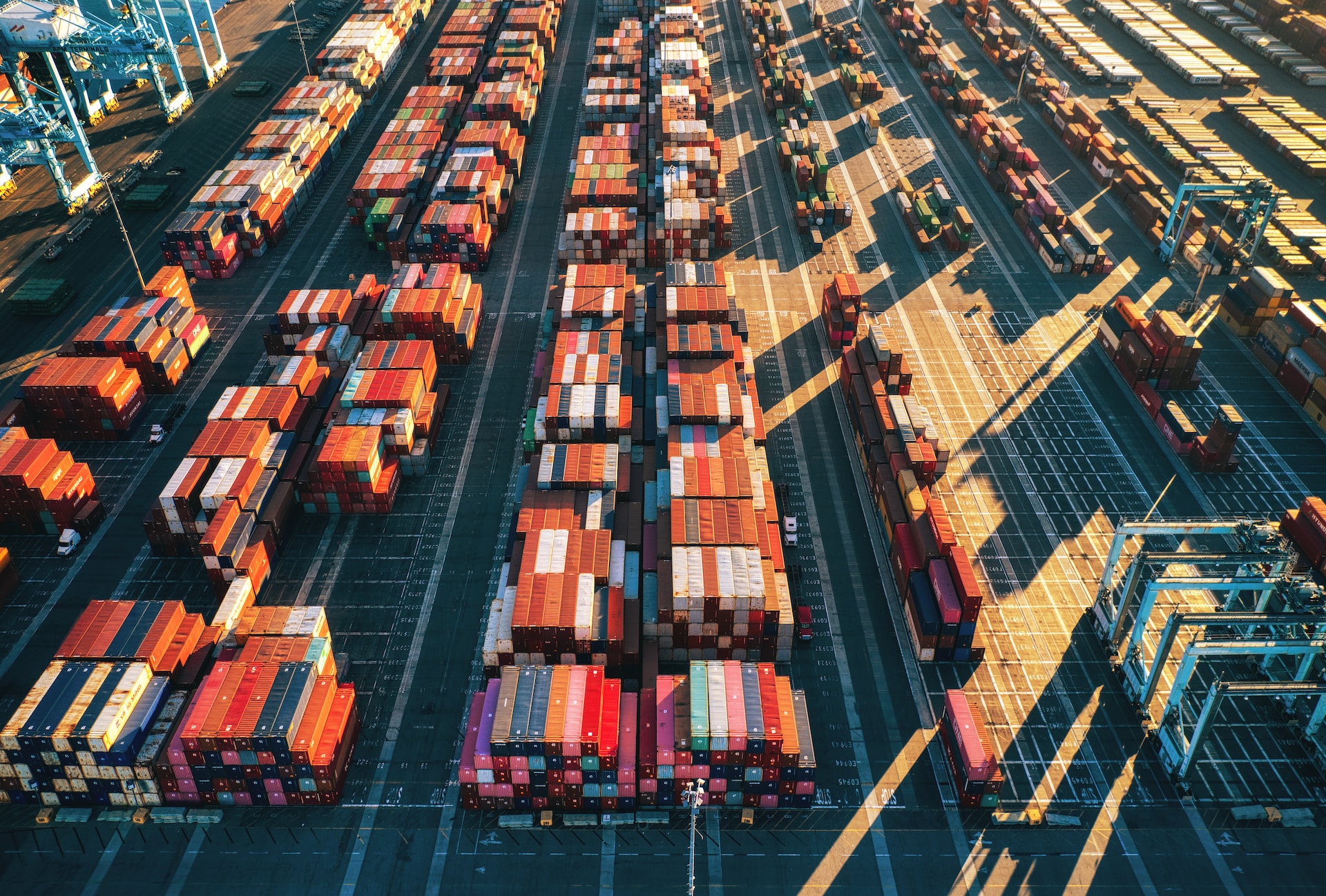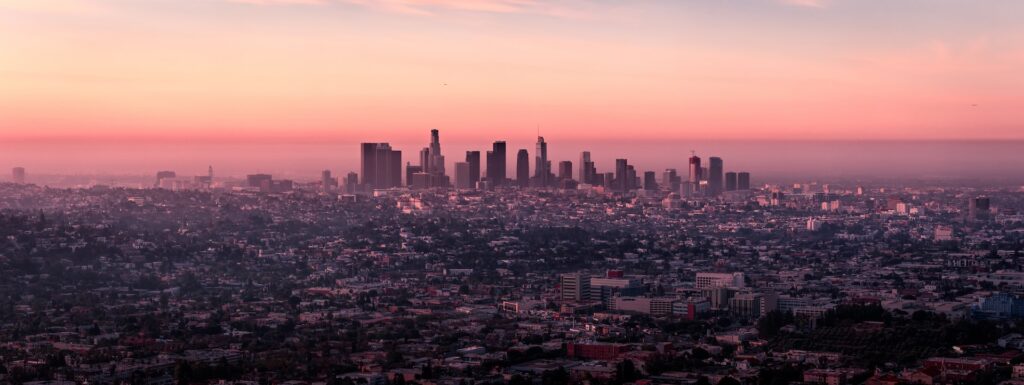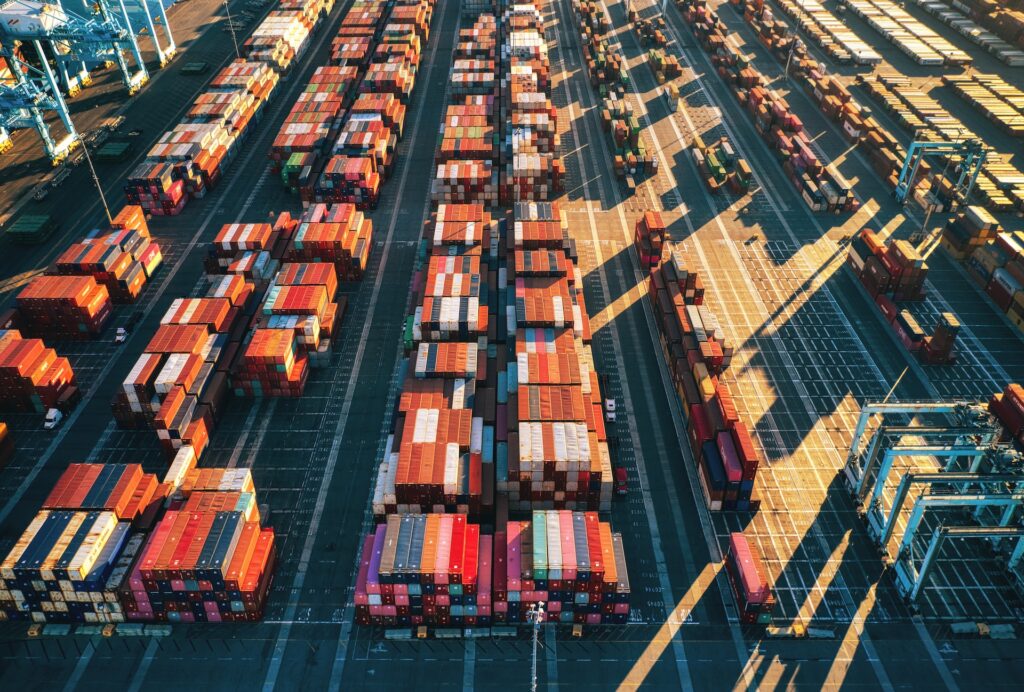This month, the United States’ largest port complex, comprised of the Port of Los Angeles (POLA) and Port of Long Beach (POLB), released their annual air emissions inventories for 2022, tracking air and climate pollutants across all logistics sectors of the ports, including ocean-going vessels, harbor craft, cargo handling equipment, locomotives and heavy-duty vehicles.
San Pedro Bay Ports’ 2022 Air Emissions Inventories reveal increased planet-heating greenhouse gas pollution from pre-pandemic levels
By Dawny’all Heydari, Climate Campaigner Manager, Advocacy
Increased Greenhouse Gas emissions and pollution endanger San Pedro Bay communities
This month, the United States’ largest port complex, comprised of the Port of Los Angeles (POLA) and Port of Long Beach (POLB), released their annual air emissions inventories for 2022, tracking air and climate pollutants across all logistics sectors of the ports, including ocean-going vessels, harbor craft, cargo handling equipment, locomotives and heavy-duty vehicles. While the San Pedro Bay Ports presented a story of successful emissions reductions, the Ports’ own data reveals that the story is more complex, and that greenhouse gas emissions increased in 2022 from pre-pandemic levels. This trend bucks the United Nations’ final warning on what’s needed to keep global temperature rise below 1.5 degrees Celsius.
In their presentations to the public, the ports focused on decreases in emissions across pollutants and sources in 2022 compared to two baseline years: 2021 and 2005. The selection of these two years as baselines is important. It exposes a flaw in the Ports’ methodology and how they are measuring their “success”.
Aerial view of containers at the Port of San Pedro in 2021
2021 was a record-breaking year for ship congestion and pollution
Let’s first look at 2021: an exceptional year of pandemic-induced fossil-fueled cargo ship congestion, marked by record-breaking backlogs at the port complex and ships sitting idle in the bay for days on end, while spewing toxic air quality pollution and GHG emissions. The ports experienced spikes across all sources and pollutants, making it a generous baseline against succeeding years.
As American consumers spent less time outside of their homes for leisure during the pandemic lockdowns, they dramatically increased their demand for online shopping, causing a supply chain crisis. Over 100 fossil-fueled ships idled off the shores of the San Pedro Bay at its worst, running their engines adjacent to port workers and communities like my own in Long Beach. The California Air Resources Board conducted an emissions analysis that found that fossil fuel pollution from 2021 cargo ship congestion in Los Angeles and Long Beach added an increase in particulate matter emissions equivalent to 100,000 big rig trucks per day. The Los Angeles Times reported that in 2021, the Port of Los Angeles saw from its ocean-going vessels a staggering 147% jump in diesel particulate matter and a 136% increase in greenhouse gas emissions in 2021 over the previous year.
Due to the exceptional circumstances of 2021, the Port of Los Angeles saw a 22% decrease of heat-trapping CO2e emissions and a 31% decrease of cancer-causing diesel particulate matter emissions between 2021 and 2022, while the Port of Long Beach revealed a 16% decrease in CO2e emissions and a 28% decrease in diesel particulate matter emissions over the same time period.
2005 is an outdated baseline
Now, let’s consider 2005: the baseline year of the ports’ joint Clean Air Action Plan (CAAP). Since the ports adopted the CAAP in 2005 and updated it in 2017, we have seen significant advances in maritime decarbonization and emissions-reductions technologies and local-to-global mobilization to address shipping emissions. The UN International Maritime Organization (IMO) adopted an initial (2018) and revised (2023) GHG Reduction Strategy, putting the industry on a deadline to reach net-zero GHG emissions “by or around” 2050, a commitment to ensure an uptake of alternative zero and near-zero GHG fuels by 2030, and indicative check-points for 2030 and 2040. At the state level, California has adopted several regulations for the sector since 2005, including the California Air Resources Board (CARB) Commercial Harbor Craft and Ocean-Going Vessels At Berth regulations. In other words, the local-to-global dynamics of industry decarbonization have evolved significantly since 2005, making 2005 an outdated baseline for measuring the emissions reductions now possible with today’s technology and required by state and international policy.
When comparing emissions between 2005 and 2022, the Port of Los Angeles reported a 4% decrease in CO2e emissions, 62% decrease in nitrogen oxide emissions, and 88% decrease in diesel particulate matter emissions. The Port of Long Beach revealed a 1% decrease in CO2e emissions, 63% decrease in nitrogen oxide emissions and 91% decrease in diesel particulate matter emissions between 2005 and 2022. While the ports met their nitrogen oxide reduction goals to reduce NOx by at least 59% during this time period, the reductions overall fail to meet the urgency of the public health and climate crises. Still, the Ports remain responsible for tremendous, ongoing air pollution that has not been fully eliminated, contributing to a public health emergency for longshoremen, West Long Beach, Wilmington and San Pedro. Notably, the Westside of Long Beach experiences around 8 years shorter life expectancy than the Los Angeles County average. The Ports must accelerate their efforts to eliminate air pollution to improve quality of life.
The ports are failing California and international climate goals
Both Ports of Los Angeles and Long Beach are failing to meet their greenhouse gas (GHG) reduction goals under the CAAP: to reduce planet-heating GHGs by 40% by 2030 from 1990 levels. Their own data shows very minor (4% and 1% in POLA and POLB, respectively) GHG reductions between 2005 and 2022.
In March, the United Nations Intergovernmental Panel on Climate Change (UN IPCC) released a final warning report, AR6 Synthesis Report: Climate Change 2023, with the last viable set of instructions on how to keep global warming below the Paris Agreement’s goal of 1.5 degrees Celsius / 2.7 degrees Fahrenheit – a planetary boundary which, if passed, would set off an irreversible chain of climate change and ecological damage.
The IPCC report advises policymakers to peak global climate emissions before 2025, meaning a deadline of December 31, 2024. It further instructs a reduction of heat-trapping GHGs by 43% from 2019 levels by 2030. 2019 is a better baseline of comparison than 2021 and 2005 due to its relevance to the UN IPCC, and because it represents the most recent pre-pandemic year, when the supply chain was functioning normally.
Using 2019 as a baseline against 2022 levels, CO2e emissions increased 19.8% at POLB and 10.7% at POLA.
To put it simply: while presenting a story of successful emissions reductions, the ports are actually experiencing emissions increases, without clear-cut plans to meet the emissions reductions on pace with IPCC’s recommendations.
There’s a window of hope, but it’s quickly closing
There is still a window of hope. The UN IPCC’s deadline of peaking global climate emissions by December 31, 2024 is 15 months away. We must use every moment possible to safeguard our future on Earth. Each of the next months, weeks, days and hours are some of the most existential and decisive of human history. Both the Port of Los Angeles and Port of Long Beach must commit to steep greenhouse gas reductions over the next 15 months to truly peak emissions before December 31, 2024, and more broadly throughout this decade to cut climate emissions in half from 2019 levels by 2030. The Ports must end their support for liquefied natural gas (LNG), a fossil fuel composed of 90% methane — a potent planet-heating greenhouse gas with 86 times the heating potential of carbon dioxide on a shorter scale of 20 years. This time next year, when the Ports present their 2023 air emissions inventories, we need to see emissions reductions aligned with IPCC’s recommendations – anything short of that will be a failure to humanity and the people who call these port communities home.



